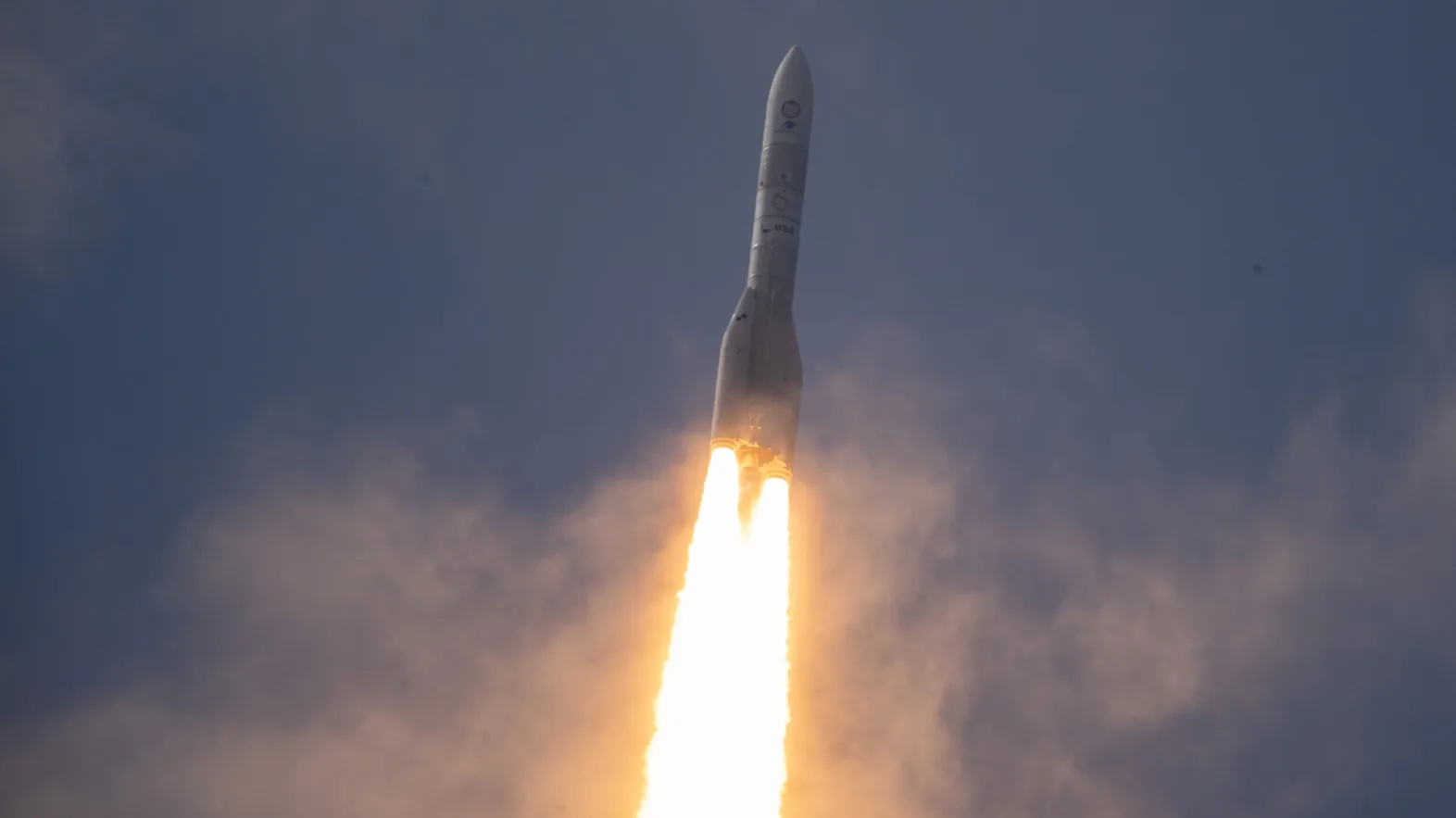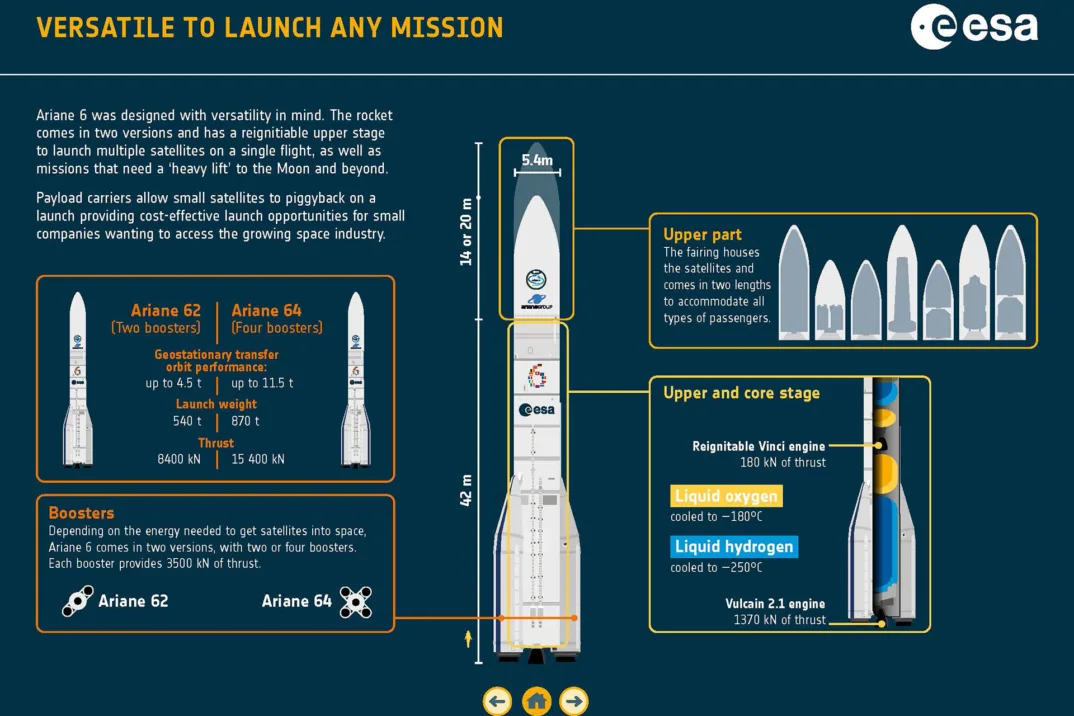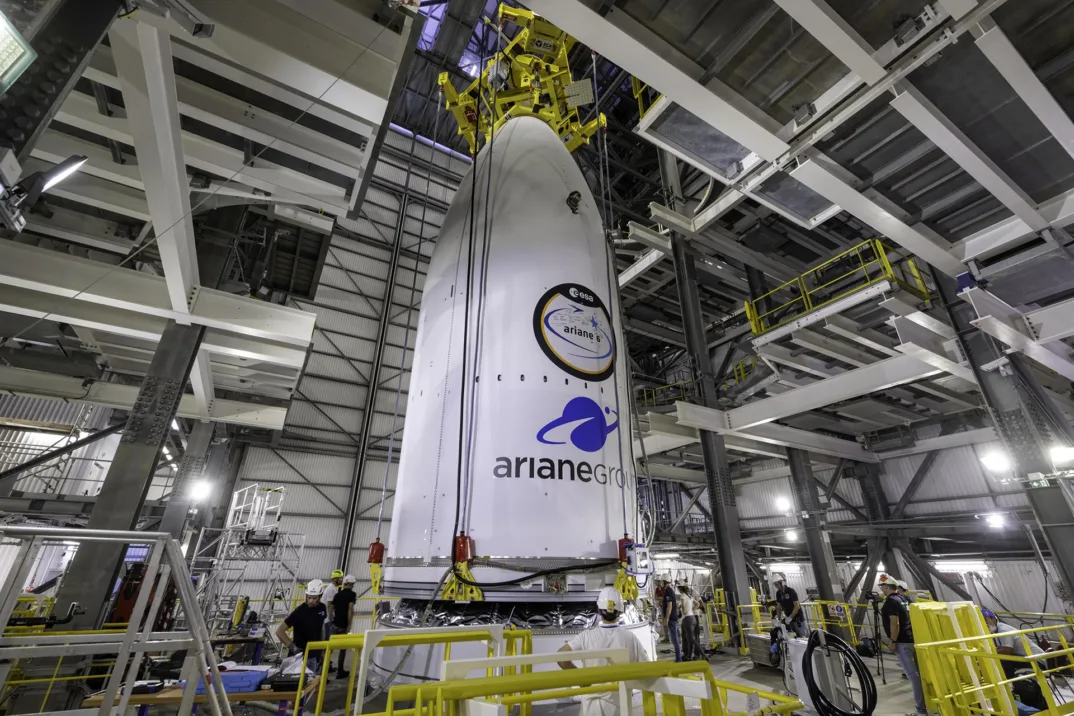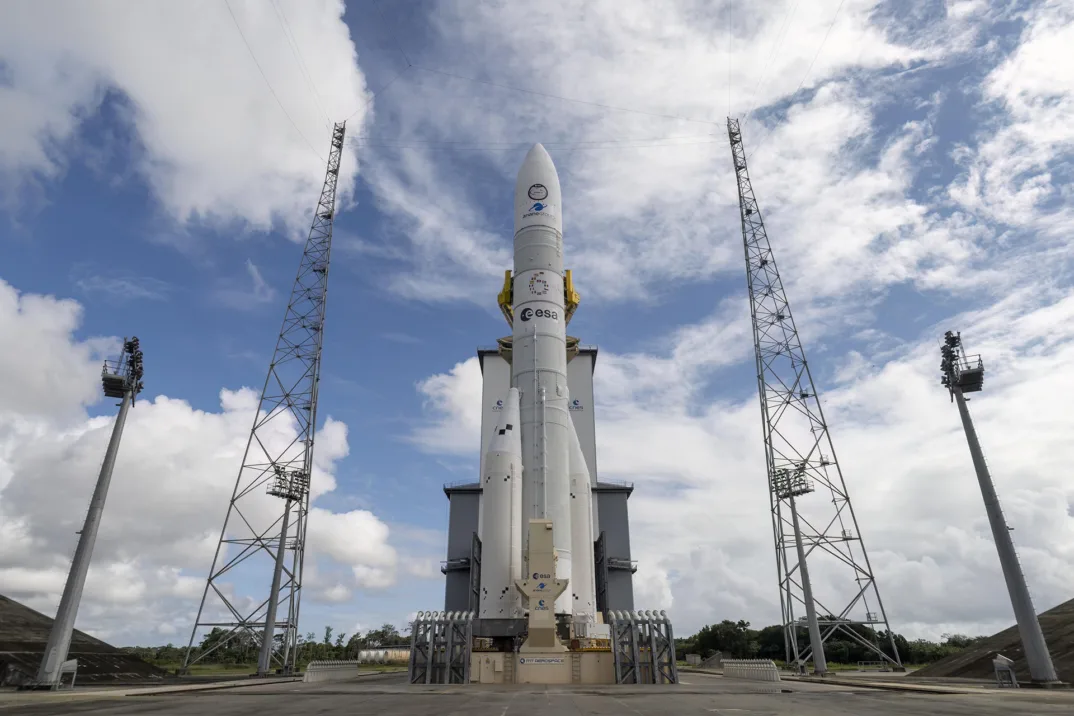Ariane 6 launch: the start of a new era in European spaceflight
On 9 July 2024, the first of the European Space Agency’s new Ariane 6 launch vehicles lifted off into space. Swiss actors are also competent and reliable partners in the new launcher programme.

The successful first launch of Ariane 6 marks a turning point for Europe's space ambitions. The launch on 9 July 2024 from Europe’s Spaceport in Kourou, French Guiana, will propel the continent into a new era of space technology and exploration. It is not only an important step in consolidating Europe’s strategic position in the global space sector, but also brings technical innovations that will ensure the continent’s competitiveness, independence and capacity for innovation in a rapidly changing space landscape.
A versatile European launch vehicle
The Ariane 6 is a versatile and competitive launch vehicle that can deliver a wide range of payloads to a variety of orbits. With a length of 62 metres, Ariane 6 is seven metres longer than its predecessor and is available in two versions, A62 and A64, with different payload capacities. This flexibility is essential to meet the diverse needs of commercial and institutional customers: Ariane 6 is designed to launch telecommunications and Earth observation satellites into orbit, as well as satellite constellations and satellites for space exploration missions.

Switzerland contributes to every Ariane launch
Fruitful cooperation between European countries is what made the launch a success – and Switzerland and its industry are part of this. As a founding member of ESA, Switzerland has been involved in European launcher programmes from the outset. As with previous versions of Ariane, Switzerland's main contribution was to the payload fairing. The fairing is located at the top of the launcher; it protects the satellites on the launch pad and during the first few minutes of the launch as they pass through the atmosphere. The technology required a high level of engineering expertise and experience in other areas. Contraves was one of the first companies in Europe to develop such fairings and has equipped all 258 Ariane launch vehicles since the first flight in 1979. Today, Contraves is known as Beyond Gravity. The company manufactures fairings not only for Ariane, but also for other European and American launchers.

Aigle-based APCO Technologies has contributed to the Ariane 5, Ariane 4, Soyuz and Vega programmes. For Ariane 6, APCO Technologies developed the MGSE (Mechanical Ground Support Equipment). APCO Technologies produces all the transverse means, transport containers and handling equipment of the upper and lower propulsion modules and of the launcher’s upper composite. The company also developed Ariane 6’s Equipped Solid Rocket (ESR) upper and lower attachment subsystems.
New discoveries in space
Ariane 6 carried a number of satellites and scientific experiments on its maiden flight. This plethora of missions is being supplied by three types of organisations: commercial companies, space agencies and universities. Together they have been building hardware to test and prove that their technology works in space. They also developed satellites to measure weather on Earth and in the solar system, study the Sun and perform other scientific experiments. These satellites were placed at the top of the rocket in the order in which they were to be released 600km above the Earth. Not all of the equipment was designed to be deployed in space: some mission equipment remains attached to the upper stage of Ariane 6, collecting data during the rocket’s flight before it descends to Earth.
These and many other scientific missions help to advance knowledge in a wide range of fields and are of particular importance to research and industry.

Europe’s Ariane programme
The Ariane programme was launched in 1973 by the European Space Agency (ESA). It allows Europe to develop its own launcher technology without having to rely on other space powers. Ariane 5 in particular has become a symbol of Europe’s technological and industrial capabilities; it asserted the continent as a regional space power. Since 1996, over a period of more than a quarter of a century, Ariane 5 has carried out 117 launches of telecommunications satellites and scientific missions for businesses and institutions. The reliability and flexibility with which Ariane 5 has enabled satellites to be launched into many different orbits is a key technological advantage that sets it apart from other launch vehicles.
Contact
Author



